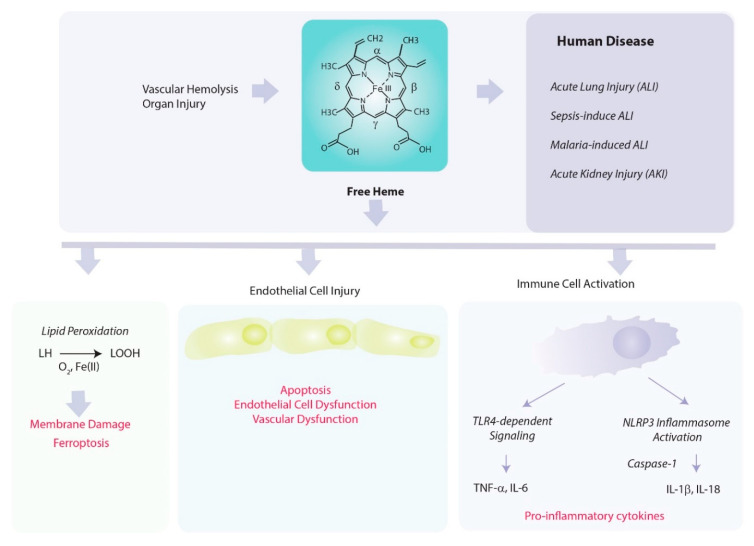Figure 3.
Pathological consequences of heme release. Free heme can promote hemolysis of red cells. Heme released into the circulation under hemolytic conditions poses a risk to the vascular endothelial cells, including the promotion of membrane damage, and necrotic and apoptotic cell death. Injured endothelial cells may compromise vascular function, and release DAMPs into the circulation. The toxicity of free heme may be limited by scavenging with hemopexin. Heme can act as a catalyst for pro-oxidant reactions, including LDL oxidation, and the peroxidation of lipids. Iron released from heme degradation may, in excess, further propagate pro-oxidant reactions and trigger ferroptotic cell death. Heme may also promote inflammation by activating TLR4-dependent and inflammasome-dependent pathways in inflammatory cells, leading to the production of pro-inflammatory cytokines.

